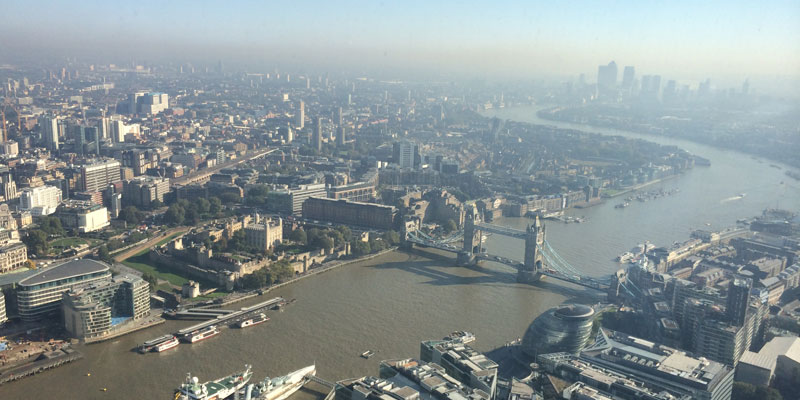
Air pollution
Our research focus
The air pollutants with the most significant environmental impacts are particulate matter (PM), ozone (O3), oxides of nitrogen (NOx), and volatile organic compounds (VOCs). Our laboratories study all these pollutants and each presents unique scientific challenges.
Particulate matter
Particulate matter is a highly complex mixture of organic and inorganic compounds.
Some particulate matter, such as black carbon from combustion or brake dust from vehicles, is released directly into the atmosphere. Other particles and fine aerosols are formed in the atmosphere from complex chemical reactions.
Over time the properties of particles change as they oxidise and age, and this in turn changes their sizes and chemistry, and ultimately their role in clouds and rainfall.
Our research studies the composition of particles, their transformation and their impacts on air quality and health.
Some particulate matter, such as black carbon from combustion or brake dust from vehicles, is released directly into the atmosphere. Other particles and fine aerosols are formed in the atmosphere from complex chemical reactions.
Over time the properties of particles change as they oxidise and age, and this in turn changes their sizes and chemistry, and ultimately their role in clouds and rainfall.
Our research studies the composition of particles, their transformation and their impacts on air quality and health.
Ozone
Ozone in the lower atmosphere is a damaging air pollutant; unlike in the stratosphere where it is an important shield from UV radiation. It is not released directly from man's activities but is formed from a complex series of reactions involving NOx, VOCs, sunlight and water vapour.
Our research develops new understanding of the chemical processes that control ozone in cities, rural environments, over the oceans and aloft in the free troposphere.
Our long-term observations of ozone are used to establish trends and help evaluate whether international air pollution policy is effective.
Our research develops new understanding of the chemical processes that control ozone in cities, rural environments, over the oceans and aloft in the free troposphere.
Our long-term observations of ozone are used to establish trends and help evaluate whether international air pollution policy is effective.
Oxides of nitrogen (NOx)
NOX - the sum of two species NO and NO2 - is a key pollutant from combustion processes, and in particular from power stations and road transport.
NO2 is directly harmful to health and has direct adverse effects on the cardiovascular system. There are large uncertainties in the total amount of NOX being emitted from man's activities, and in many cities NO2 has proved to be the most difficult air pollutant to control.
Our research is developing new understanding of the emissions of NOX from vehicles, cities and from the natural environment, enabled using advanced measurement technologies.
NO2 is directly harmful to health and has direct adverse effects on the cardiovascular system. There are large uncertainties in the total amount of NOX being emitted from man's activities, and in many cities NO2 has proved to be the most difficult air pollutant to control.
Our research is developing new understanding of the emissions of NOX from vehicles, cities and from the natural environment, enabled using advanced measurement technologies.
Volatile organic compounds (VOCs)
VOCs are a very complex class of different organic compounds emitted to air from petrochemicals, solvents, combustion and also from natural processes, for example from trees, plants and the oceans.
Some VOCs are directly harmful to health, for example benzene and 1,3-butadiene are known to be carcinogenic. Others are involved in the chemical cycles that form the secondary pollutants ozone and particulate.
Our research creates models that simulate the chemistry of VOCs, makes lab measurements of the kinetics of their reactions and supports observations in the field of their emissions and trends.
Some VOCs are directly harmful to health, for example benzene and 1,3-butadiene are known to be carcinogenic. Others are involved in the chemical cycles that form the secondary pollutants ozone and particulate.
Our research creates models that simulate the chemistry of VOCs, makes lab measurements of the kinetics of their reactions and supports observations in the field of their emissions and trends.
